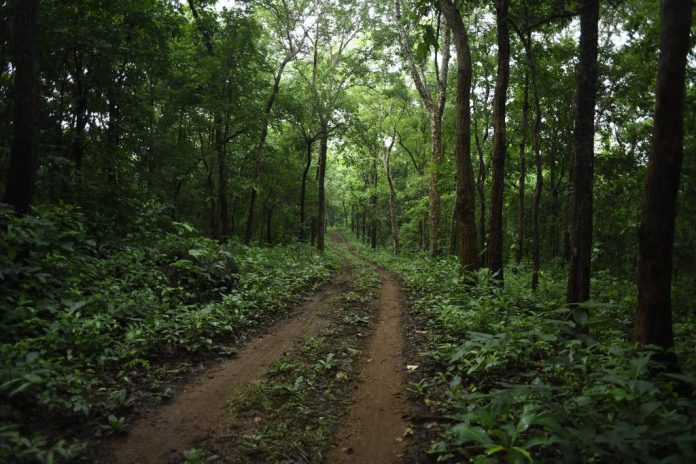This article is written by Souradh C. Valson form Government Law College, Thiruvananthapuram, and it discusses the forest laws and the power, protection, and expropriation under these laws.
Table of Contents
Introduction
Both the central and state governments have the responsibility of managing forest lands sustainably. The central legislations provide an overarching framework for the state government so that they can make specific rules and regulations concerning flora and fauna of the states.
Forest laws in India
The following are the important forest laws in India.
Indian Forest Act, 1957
The Indian Forest Act, 1957 is the main legislation governing the management of forest and its resources in India. It is the primary guiding law relating to forestry. The main objectives of the Act are:
- Preservation and consolidation of forested areas;
- Identifying, protecting, and conserving forest areas with wildlife;
- Regulating and streamlining the use and transport of forest resources;
- Imposing a duty on timber, other forest produce, and resources;
- Identifying and categorizing forests into protected forests, reserved forests, and village forests.
Under Section 35 of the Act, the state government can prohibit or regulate the following activities in forest and wastelands:
- Clearing or breaking the land for cultivation;
- Pasturing cattle;
- Clearing the vegetation.
Section 36 states that if there is willful disobedience or neglect on the part of the owner, the state can put the forested area under the control of a forest officer.
Forest Conservation Act, 1980
The Forest Conservation Act, 1980, deals with the use of forested areas for non-forestry activities. According to the Act, the state government acts as the enforcing authority. All proposals and requests regarding the use of forested areas for development and building infrastructures such as transmission lines, irrigation channels, drinking water, power, railway, mining, and defence are approved by the state government. Additionally, the Act provides for compensatory afforestation, wildlife conservation, biodiversity protection, and catchment area treatment for the lands affected by developmental activities.
National Forestry Policy, 1988
Policies like Joint Forest Management where the forest authorities/departments and the villages look after and protect certain forest areas for:
- Meeting the basic requirements and needs of the tribal and rural population;
- Increasing the productivity of the forest;
- Improving the efficiency of utilizing the forest products;
- Reducing the pressure on existing forests.
One of the best outcomes of the national forestry policy was implementing the joint forest management scheme. With this scheme, around 85,000 village communities in 27 states are managing vast areas of forest lands.
Wildlife Protection Act, 1972
The main objective of this Act is to protect plants, wild animals, and different tree species. Another important policy introduced was criminalizing the hunting of animals and the collection of plants in protected areas. the Tiger and Other Endangered Species Crime Control Bureau(Wildlife Crime Control Bureau), and the Tiger Conservation Authority were also established.
Scheduled Tribes and Other Traditional Forest Dwellers (Recognition and Forest Rights) Act, 2006
The protection of forest dependent communities that rely exclusively on the forests for their livelihood and daily subsistence was the objective of this Act. With this Act, these communities were given exclusive rights and concessions.
Forest Rights Act, 2006
The Forest Rights Act, 2006 is one of the most opposed and controversial legislation and gathered a lot of attention and led to many debates.
Opposition
This Act was strongly opposed by the environmentalists and wildlife conservation lobbies. The forest department and the timber mafia opposed this to prevent their loss of power over the forests. Corporate bodies were also against the implementation of the Act because the Act conferred rights to tribal bodies which would make their eviction difficult.
Role of judiciary in forest legislations
There is an immediate need for protecting forests. The growth of population along with other developmental projects are severely reducing the forest cover. Studies show us that at least 33% of the country must be covered with forests for ecological stability. The current situation is very bleak due to large-scale deforestation that reduced the forest cover to less than 18%.
In 1976, the forests were placed under the concurrent list, so the Parliament was also able to make laws relating to forests. Despite these efforts, deforestation continued to reduce the forest cover.
In 1996, the Supreme Court issued directions to overlook and enforce laws relating to the forests across the entire country. The courts in India have played an active role in protecting the ecosystem and environment. Through several cases, the Supreme Court and high courts have provided various orders and judgments to protect nature and prevent environmental degradation. The judicial pronouncements are made from a constitutional and environmental point of view. The courts have strictly refused non-forest activities and giving lease for such activities.
Important cases
-
N. Godavarman Thirumukalpad V. Union of India
This case was influential in forest conservation in India, popularly known as the forest case, and is the important judicial intervention concerning the administration of forests. This case initially dealt with addressing the issue of cutting the timber from the woods, but later other cases with similar nature were added to this case. The court attempted to address and explain terms like forest and forest land. The court relied on the information given by various commissions, committees, and experts. Forest (Conservation) Act, 1980, was reinterpreted and widened the scope of the term “forest” which, before the judgment only consisted of government declared forest, irrespective of whether they had tree cover or not and similarly, many areas with good tree covers were not considered as forests. After this Act, the term forest now includes all areas that fall within the dictionary definition of forest.
-
The Center for Environmental law (CEL), WWF VS. Union of India and Others
The supreme court, through this judgment, took the power of the central government(in respect of forests) and state government (in respect of Sanctuaries and national parks) concerning denotification/dereservation. Both the Godavarman case and this case have made major changes in forest management. The following are the important conditions laid down in this case:
- No national park, sanctuary, or forest can be de-reserved without permission from the Supreme Court;
- Non-forest activities are permitted only if they are approved by the Forest (Conservation Act, 1980;
- New authorities such as Compensatory Afforestation Management, Planning agency, and Central empowered committee were set up.
The conflict in India’s forests: will State-driven expropriation continue
Expropriation is the act of taking forest for public use by the state. Forest management driven by the state is usually only driven by political and powerful influences.
The different areas that are notified or classified as forest make up almost a quarter of India’s total area of land. These are areas containing important and valuable natural resources and are occupied by the most oppressed and poorest communities. These communities and areas are an integral part of the Indian political economy. The integration of these communities and areas creates conflicts and issues that affect society and the economy of the country.
Expropriation in certain cases
Under Section 37 of the Indian Forest Act, 1927, if the state government believes that a forest or land should be acquired for a public purpose, instead of placing the land under the control of a forest officer, the state government can acquire it under the Land Acquisition Act, 1894.
A state–capital nexus
The most basic conflict surrounding the forests arose in the second half of the 19th century when the Britishers attempted to take the timbers from the Indian forest and created the concept of government forest by the enactment of the Indian Forest Act, 1927. Changes brought by this Act are still in effect today. Today, the state government, without interruptions, tries to expropriate forest property. Both the state and the center tries to use the forests only for its resources like timber, minerals, flora, and fauna for various purposes.
The most recent form of this conflict happened in 2013 when the Supreme court ordered the stay of all regularisation of all encroachment. This led to nationwide protests because it evicted many families from their homes. The mass protest led to the Parliament enacting The Scheduled Tribes and Other Traditional Forest Dwellers (Recognition of Forest Rights) Act, 2006. This was also the period the government enacted other laws such as the National Rural Employment Guarantee Act (NREGA), 2005, the Right to Information Act, 2005.
Subsequent legislation such as the Right to Fair Compensation and Transparency in Land Acquisition, Rehabilitation and Resettlement Act, 2013, was also influenced by subsequent decisions.
Policies such as the FRA and NREGA placed importance on changing India’s political economy, not as a welfare state, but as a system where the resources of the forests are collectively and democratically controlled. The FRA has helped in achieving a more democratic reach for the forest laws.
This new law was supported by many for reasons such as empowering gram sabha with many important statutory powers such as ownership of non timber produce, consent for the relocation of wildlife, deciding who would receive the title of rights, and especially the right to manage and conserve any forest especially community forest resources. A key point to note is that, before the FRA, the tribal people did not have the right to access their own forests or homes without suffering any kind of harassment. The supporters of this sought to change the existing laws with a more collective and democratic approach of control and management.
This new Act gathered dissatisfaction from big companies and forest officials because it restricted their access to forest resources. For this reason, many resistance and opposition were raised before the Act was passed.
Undercutting the Forest Rights Act
With a series of backdoor policies, the government sought to reverse many of the changes achieved during the FRA era. In 2015, For the enforcement of these policies, the government issued the notification of rules for administering the village forest by the Madhya Pradesh and Maharashtra Governments.
These rules established a parallel procedure where the forest department directs how the villages could receive rights over collectively and commonly managed forests. However, in practice, the forest department uses monetary and pressure methods to achieve this process rather than following the guidelines set up in the FRA. Many states enacted policies undercutting the FRA.
In 2015, the government issued guidelines that empowered private companies to take over forested areas for growing crops and other commercial trees, and also arbitrarily reduced the rights over the leased land to 15%.
In 2016, the Compensatory Afforestation Fund Act was enacted to provide a fund of Rs. 50,000 crore for activities relating to forests that have a direct impact on people dwelling in forests. Despite opposition, this law did not even mention or include the term forest rights. Although the government gave an assurance to include forest rights in the new rules, that did not happen. The draft national policy failed to include forest dwellers and forest rights substantially.
In 2020, the country witnessed two important developments; firstly, the prolonged silence by the government on the order issued by the Supreme Court, evicting millions, on a case challenging the forest rights. Secondly, the government framed amendments to the Indian Forest Act, 1927, which permitted the use of firearms by the forest officials, and the expropriation and taking the rights of the people for monetary compensation. After the widespread criticism from activists and tribal communities, the government withdrew the draft of the bill to amend the Indian Forest Act, 1927.
Way ahead
The efforts for centralisation and strengthening expropriation probably will not stop anytime soon. The connection between the resistances in forest areas and the resistance in other places are becoming deeper. It is clear that expropriation by forest management with state authority is driven by public interest. These factors are likely to polarise the masses on these issues. In the short to medium term, there will be focused attacks on the FRA to restore the dominance of corporate capitals and state bureaucracy. In the long term, this polarisation will lead to massive resistance, which not only results in the defence of FRA but also creating a better system for the protection of forest rights.
Conclusion
The government has initiated several policies for the protection and preservation of forests. The forest area in India is reducing due to excessive cutting of trees for commercial purposes, leading not only to severe environmental problems. Governments must overhaul the old laws and draft new laws to include the changes.
References
- https://thelawbrigade.com/environmental-law/forest-laws-in-india-policy-and-assessment
- http://ces.iisc.ernet.in/biodiversity/legis/foract2.htm
- https://www.epw.in/engage/article/conflict-indias-forests-will-state-driven
LawSikho has created a telegram group for exchanging legal knowledge, referrals and various opportunities. You can click on this link and join:
 Serato DJ Crack 2025Serato DJ PRO Crack
Serato DJ Crack 2025Serato DJ PRO Crack











 Allow notifications
Allow notifications


